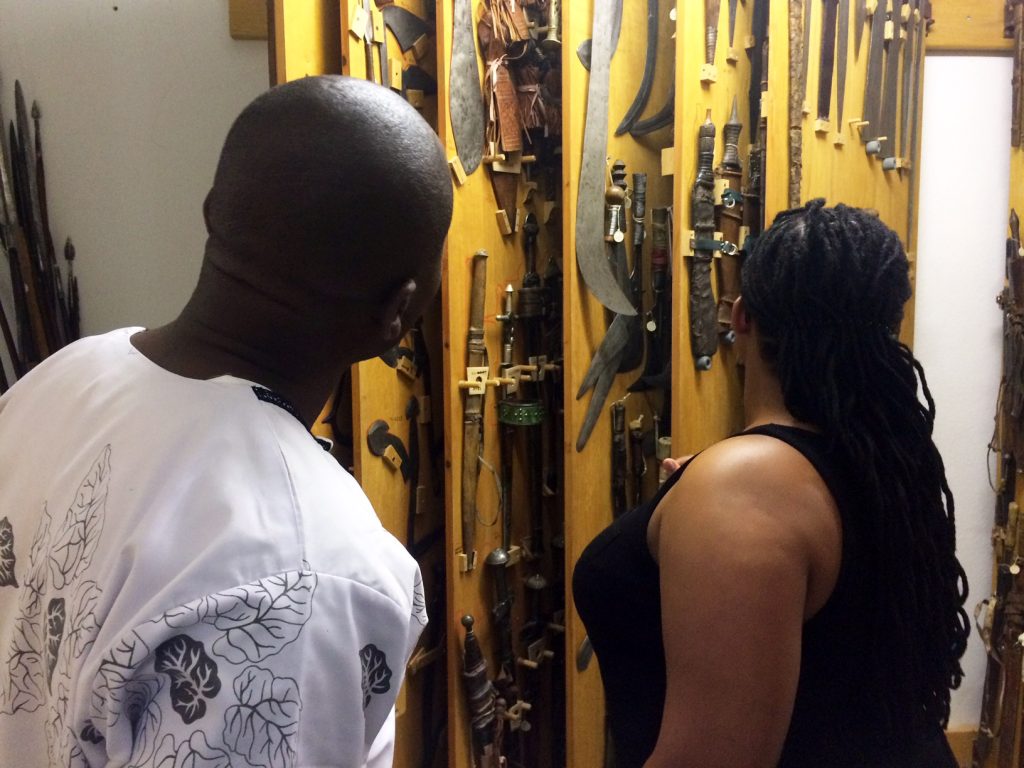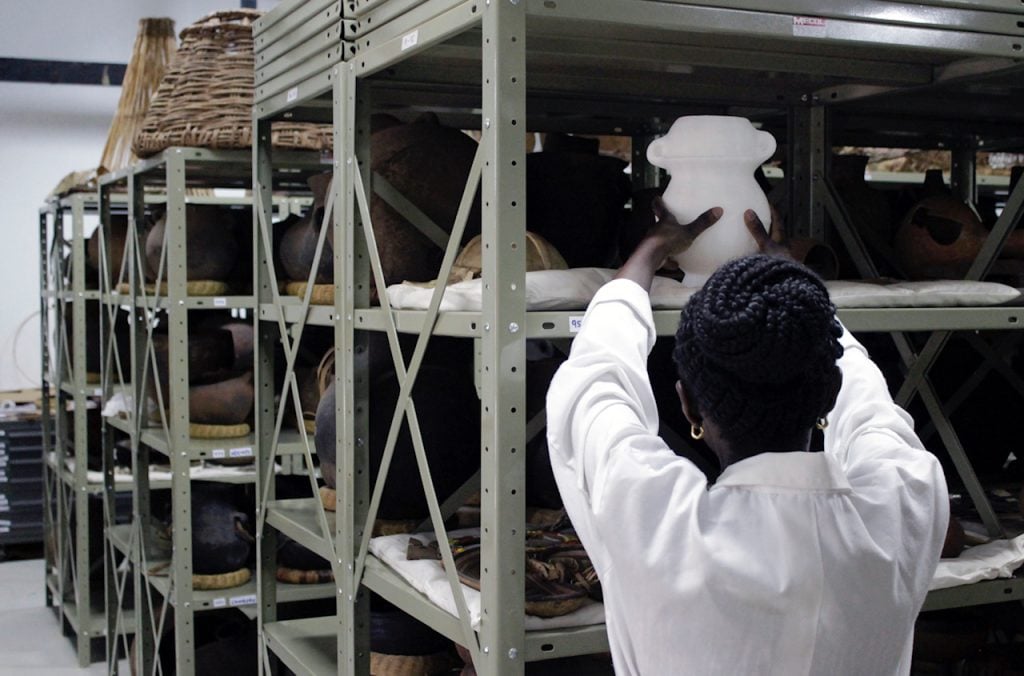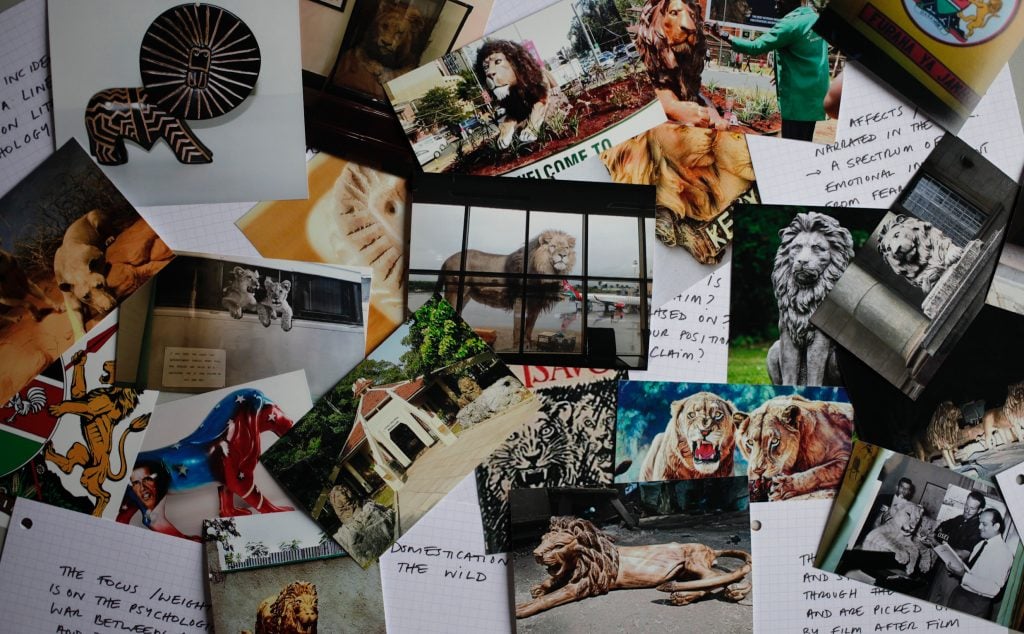Art & Exhibitions
Artists and Scholars From Europe and Africa Are Collaborating to Help Kenya Reclaim Its Art From Foreign Museums
There are 32,000 Kenyan objects held inside just 30 Western museums.

There are 32,000 Kenyan objects held inside just 30 Western museums.

Kate Brown

There are no museum objects on view at a major museum exhibition in Nairobi, only empty display cases.
This poignant absence that pervades “Invisible Inventories,” which opens at the Nairobi National Museum on March 18, is the product of a years-long research project by the National Museums of Kenya alongside two German institutions, the Welkulturen Museum in Frankfurt and the Rautenstrauch-Joest-Museum in Cologne. Together, they are tackling how to make Kenya’s art and objects—which are currently largely found peppered across Western cultural institutions, either on display or stowed away—present in the African country.
Restitution is one eventual avenue to reclamation. But first, says artist Sam Hopkins, one of the initiators of the project and a member of the Shift collective, it is essential to count the losses.
His group and the Nairobi-based collective The Nest have each created artistic interpretations of the absent works based on information in large database built out by scholars who are hoping to better understand just how much is missing from the East African nation. The numbers are staggering: between just 30 institutions in Europe and the US, there are 32,000 Kenyan objects.

A view of “Invisible Inventories” (2018). Photo: Shift Collective
Another aspect of the project is understanding what the losses mean to Kenyans, and how the objects were used at the time they were taken. To continue this work, the National Museums of Kenya will takeover managing and updating the database once the show’s international tour finishes.
“So many of the museums that have these objects don’t feel guilt or shame,” says Nairobi anthropologist Jane Pauline, who works with the Nest collective and the National Museums of Kenya lab as a research assistant in an interview on the database’s website. “It actually hurts me to think about it. I hope we are just opening it up for more people to learn and get involved.”
The Frankfurt-based scholar Leonie Neumann from the Welkulturen Museum, where the exhibition will travel in October after a stint at the Rautenstrauch-Joest-Museum in Cologne, told Artnet News that provenance research can be patchy, and that the database is essential to changing that.
“We need to open our archives and talk about these objects,” she says.
The Frankfurt institution has 520 objects from Kenya, 23 of which were acquired before Kenyan independence in the 1970s. This is a relatively small number compared to the hoards at the British Museum, for example, but Neumann said the goal is to establish a model for knowledge creation that can be replicated.

Preparatory photo montage from the project Simba Mbili: Potential Histories of the Man-Eaters of Tsavo. Credit: Sam Hopkins & Marian Nur Goni.
Importantly, in some cases, lost objects are an issue of very recent history.
“I remember as a child in Kenya seeing the lorries of Vigangos being taken away,” Hopkins says, who is British-Nairobi, referring to funerary objects made of carved wood that became hugely popular collectibles in the late 1970s and early 1990s.
Another issue has to do with how Western knowledge and opinions of these objects has been developed.
“A lot of the research was written as though Black people would never look at it, or dare to have opinions about it,” Njoki Ngumi, a member of the Next collective, said in a recently published interview. “We’ve had to sift through a lot of idly racist opinions and thoughts, then have to reflect on them in order to find even shreds of information about our ancestors and their contemporaries.”
Hopkins adds that in this light, exhibitions can only do so much. The next steps are “diplomatic gestures by the state.” While there is a growing awareness in recent years of the number of items taken from Africa and into European and US institutions, “there are fewer platforms for these discussions in the Global South… We want to look from Nairobi outwards.”
Negotiating “more equitable relationships with cultural institutions, especially in the Global North,” is critical and far from done, Ngumi says. “We are continuing the work that our forebears began regarding decolonizing, and also taking back for ourselves what we can.”